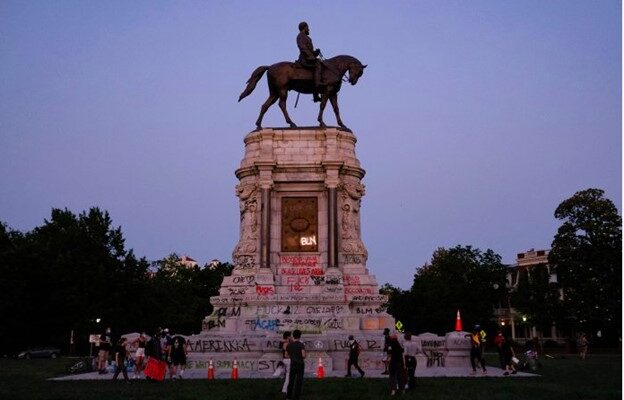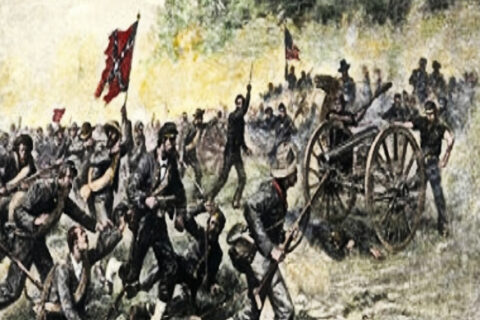Traditionally, there have been three major schools of thought on Southern identity and how it relates to the relationship between Dixie and the United States. The first group is comprised of Southern Nationalists. This group holds that Dixie is a nation of its very own and continuing to stay in the Union is a grave mistake. In this view, if Dixie is to survive, the South must be free. The second group are the Americanists. Contra the Southern Nationalists, the Americanists hold that there really is nothing unique about Dixie, and any apparent differences between the South and the United States can be traced back to the twin “evils” of slavery and segregation, and since those are gone, there is no good reason for Dixie to still consider herself unique on any level. Thus, Dixie should be abolished, more or less.
There is also the third and historically largest group – the Regionalists. This group holds that Dixie is part of the United States, and fully so, but also has her own unique traits that should be maintained. In many ways, the Regionalists are like the “Little Russia” school of Ukrainian identity, one that believed Ukraine was part of Russia but also has her own culture. This can be held in contrast to both the Ukrainian Nationalists, who advocated (and still do) for an independent Ukraine, and those that viewed Ukraine as simply Russian. As I stated before, this is the group that has historically been the most dominant. These are the people who fly the Union and Confederate flags side-by-side, never considering the obvious tension between the two.
There are good reasons why the Regionalists held so much power. It was an essential part of the “Grand Compromise” that emerged after Dixie overthrew the Reconstruction-era governments: in exchange for loyalty and her sons (they would be needed for the Empire’s future wars), Dixie would be allowed to enjoy a great deal of home rule and maintain her own identity. For a while it worked, there is a reason why George Wallace was able to quickly move from using “Stand Up for Alabama” as a campaign slogan when he ran for governor to using “Stand Up for America” when he ran for president. Southerners were, by and large, loyal Americans, but also fiercely proud to be Southerners.
This compromise, though never perfect, could work well enough to keep most people happy. But this compromise also depended on certain shared attributes. Both the South and the United States were fundamentally Christian nations in 1950. Today, this is no longer the case. A wedge has been driven between the United States and the traditional South, and this chasm will only get worse. Starting in 1948, the United States embarked on a project to end the home rule portion of the “Grand Compromise,” a project largely completed by 1965. In 1930, the South could claim to have a position similar to Hungary in the Austro-Hungarian Empire. By 1970, Dixie had been reduced to a position more similar to Ireland under British rule.
Though the home rule portion of the “Grand Compromise” has been ended, the United States was never able to terminate the second portion of that agreement and, as a result, Dixie was able to maintain her own identity (though still within the confines of the United States). This is why something like The Dukes of Hazzard could be one of the most popular television shows of its era. This is also why the Confederate flag was still freely flying throughout most of Dixie and monuments to the great heroes of the Confederacy were still standing. And, this is why Martin Scorsese could remake Cape Fear in 1991 and feature a parade with several people flying the Confederate flag and it not be intended to make them evil. It was understood that allowing this was part of the “Grand Compromise.” The South had to be allowed to keep her flag, heroes, culture, and identity. She had earned it though her loyalty.
Beginning in the early 1990s, a movement began in earnest to end the second part of the “Grand Compromise” and fully incorporate Dixie into the Union. They had some successes, especially on college campuses, but it was still a long and drawn-out battle, it was the trench war of ideological conflicts. With the election of Obama in 2008, they began to have a little more success, especially now that they had the full weight of a federal government trained in Cultural Marxism, but it was still closer to trench warfare than blitzkrieg. That is until 2015, when Dylann Roof gave the Left the most perfect excuse they needed to attack Southern identity. The Confederate flag was targeted first and then came the monuments to the Confederacy. Now, we are at the stage where someone, or something, can be targeted for simply being a Southerner not full of self-hatred, even if they held fairly left-wing views for their time, such as Flannery O’Conner. We kept our side of the bargain. We remained loyal, but we were still targeted for destruction. Never forget that.
What all this means for Southerners is that whatever merit may have been attributed to the Regionalists in 1880, 1950, 1970, or even 2000 can no longer be believed today. One part of the “Grand Compromise,” home rule, was ended almost 60 years ago, and now it has been made clear that they will stop at nothing to end the other part of the “Grand Compromise.” The Regionalist position is dead. The old middle ground has been melted under the hot sun of globohomo. Today, one can no longer seriously be a Southern Regionalist. It is either Americanism (globalism) or it is Nationalism. There is no longer an Austro-Hungarian style compromise for us.
Dixie must be liberated, or she will be abolished. The center cannot hold.







Hear Hear! I’ll take option #1!
And we better hurry!
http://nicholasstixuncensored.blogspot.com/
In fact … we better REALLY hurry!
https://beforeitsnews.com/alternative/2022/06/juan-osavin-makes-his-most-explosive-speech-ever-its-time-to-get-busy-video-3774733.html